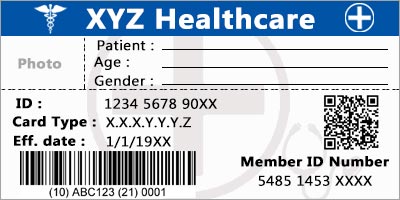Challenges Related to Healthcare Industry Barcodes
There are several common challenges or issues related to healthcare industry barcodes. Here are some examples:
-
Barcode Quality:
Poor barcode quality can result in difficulty or inaccurate scanning, which can lead to errors in medication administration, patient identification, and record keeping. This can be addressed by using the high-quality barcode printers, labels, as well as scanners, and ensuring that barcode standards are perfectly followed.
-
Barcode Placement:
Barcode placement is critical for accurate scanning. If the barcode is placed on an uneven surface or is too small or too large, it may not be readable by the scanner. This can be addressed by ensuring that barcode placement guidelines are properly followed and that barcodes are consistently placed in the same location.
-
Barcode Compatibility:
Barcode scanners and software may not be compatible with all types of barcodes. This can result in errors or delays in the medication administration process. This can be addressed by ensuring that the barcode system is compatible with the barcodes used in healthcare, such as Code 128, Data Matrix, or PDF417.
-
Data Quality:
Barcode data may be incomplete, inaccurate, or outdated, which can lead to several errors in medication administration, patient identification, and record keeping. This can be addressed by ensuring that the data of the barcode is regularly reviewed and updated and that data quality standards are perfectly followed.
-
Staff Training:
Healthcare staff may not be properly trained in the use of barcode technology, which can result in errors in medication administration, patient identification, and record keeping. This can be addressed by providing staff with training on the use of barcode technology, and ensuring that they are regularly trained and updated on changes to barcode systems and processes.
By addressing these common challenges or issues related to healthcare industry barcodes, healthcare organizations can ensure that their barcode systems function properly and effectively, leading to improved patient safety, efficiency, and accuracy.
Best Practices for Healthcare Industry Barcodes in a Healthcare Setting
Here are some best practices for implementing healthcare industry barcodes in a healthcare setting:

-
Involve all Stakeholders:
Involve all stakeholders, including physicians, nurses, pharmacists, and IT staff, in the planning and implementation process to ensure that the barcode system meets the needs of all users.
-
Choose the Right Barcode Format:
Choose a barcode format that is compatible with your EHR system and medication dispensing process. Common barcode formats used in healthcare include GS1 DataBar and Code 128.
-
Label all Items:
Label all items, including medications, patient wristbands, and specimens, with barcodes. Make sure that the barcode is readable by all scanners used in the healthcare facility.
-
Train Staff:
Train all staff members who will be using the barcode system to ensure that they know how to properly scan and enter data.
-
Conduct Regular Maintenance:
Regularly inspect and maintain barcode scanners and labels to ensure that they are in good working condition.
-
Establish Processes for Exceptions:
Establish processes for handling exceptions, such as unreadable barcodes or missing labels. For example, a manual override process may be needed for medications that cannot be scanned due to packaging issues.
-
Monitor and Analyze Data:
Use the data collected from the barcode system to monitor medication administration, patient identification, and other healthcare processes. Analyze the data to identify areas of improvement and optimize processes.
-
Regularly Review and Update Policies and Procedures:
Regularly review and update policies and procedures related to barcode use to ensure that they are current and effective in improving patient safety and workflow efficiency.
